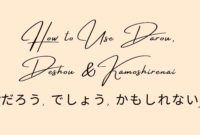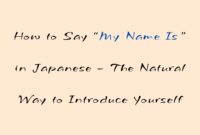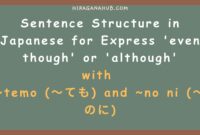The Particle “の” to Indicate Possession (Kore/Sore/Are は Noun1 の Noun2
です)

This time, we’re still learning about the particle “の” (No), but we’ll focus on how to express
possession using the sentence pattern
これ/それ/あれ + は + Noun1 の Noun2 + です. Let’s explore this topic in
detail!
The Function of “の” for Possession
In Japanese, the particle “の“ is
often used to indicate possession. It helps you connect two nouns to show
ownership or relationship. For example, if you want to say “my bag,” you
simply add no after the pronoun
watashi (I/me).
often used to indicate possession. It helps you connect two nouns to show
ownership or relationship. For example, if you want to say “my bag,” you
simply add no after the pronoun
watashi (I/me).
Sentence Pattern
The pattern is the same as before:
これ/それ/あれ + は + Noun1 の Noun2 + です
Here:
-
これ/それ/あれ (kore/sore/are): Demonstratives
meaning “this,” “that near you,” and “that over there.” - Noun1: Indicates the owner.
- Noun2: Indicates the item owned.
- です (desu): The copula, meaning “is.”
This structure translates to: “This/that is Noun2 belonging to Noun1.”
Example Sentences
Kanji:
これは田中さんのペンです。
Hiragana:
これは たなかさん の ペン です。
Romaji: Kore wa Tanaka-san no pen desu.
Meaning: This is Tanaka’s pen.
これは田中さんのペンです。
Hiragana:
これは たなかさん の ペン です。
Romaji: Kore wa Tanaka-san no pen desu.
Meaning: This is Tanaka’s pen.
Kanji:
それは私の時計です。
Hiragana:
それは わたし の とけい です。
Romaji: Sore wa watashi no tokei desu.
Meaning: That is my watch.
それは私の時計です。
Hiragana:
それは わたし の とけい です。
Romaji: Sore wa watashi no tokei desu.
Meaning: That is my watch.
Kanji:
あれは兄の車です。
Hiragana:
あれは あに の くるま です。
Romaji: Are wa ani no kuruma desu.
Meaning: That is my older brother’s car.
あれは兄の車です。
Hiragana:
あれは あに の くるま です。
Romaji: Are wa ani no kuruma desu.
Meaning: That is my older brother’s car.
Study Tips
-
Memorize personal pronouns like watashi (I) and
anata (You). - Use this pattern to practice talking about your belongings or others’.
- Don’t worry about making mistakes; practicing helps you improve.
With this pattern, you’ll be able to confidently express ownership in
Japanese. Start using it in your conversations today!


